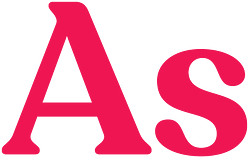By Naomi Sayers
 Athe song goes, “O’ Canada! Our home and native land!” But I prefer the lyric, “O’ Canada! Our home on native land!” On stolen Indigenous land.
Athe song goes, “O’ Canada! Our home and native land!” But I prefer the lyric, “O’ Canada! Our home on native land!” On stolen Indigenous land.
Often when people (namely, non-Canadians) picture Canada, they like to imagine a country of cheap socialized healthcare, friendly people, and tolerance.
But the healthcare that Indigenous people like me receive is subpar.
When I was in my early teens, I tried to kill myself. After this attempt to end my life in 2000, I was forced into a youth psychiatric hospital three hours east of my community, away from my family.
The lack of mental health resources for Northern Ontario First Nations communities is startling but unsurprising. The hospital where I was sent for a month-long stay lacked the cultural support that may have helped me heal. Two years later, another psychiatrist gave me an ultimatum: take an anti-depressant (which is now only recommended for adults) or risk having the Children’s Aid Society come knocking. At that time, I was 15 years old.
A 2015 report found that Aboriginal youth suicide is on the rise in Northern Ontario, and that across Canada, our suicide rates are up to seven times higher than for non-Aboriginal youths. Similarly, Aboriginal children are six to eight times more likely to be taken into child welfare care than non-Aboriginal children.
And when Indigenous girls like me grow up, the poverty and violence we face is staggering. These experiences contribute to the growing number of missing and murdered Indigenous women, girls, and two-spirit folks (i.e., Native people who have both feminine and masculine spirits).
While I’ve avoided all of these fates, it sometimes feels like it was by a hair.
 AAt some point when I was 15, a car hit me while I was a walking on the highway. I don’t remember anything about the accident, but I woke up from a coma a month later with a brain injury. I left home two years later, and began to work two minimum wage jobs while attending high school. I soon realized that to take care of myself financially, I needed to find better paying jobs.
AAt some point when I was 15, a car hit me while I was a walking on the highway. I don’t remember anything about the accident, but I woke up from a coma a month later with a brain injury. I left home two years later, and began to work two minimum wage jobs while attending high school. I soon realized that to take care of myself financially, I needed to find better paying jobs.
Forced displacement of Indigenous peoples takes many forms. Some are forced into state care, while others are forced to leave home for work and educational opportunities. For Indigenous women, it sometimes means difficulty accessing safe and secure housing. For me, when I was 18, I escaped an abusive relationship after being arrested and found that safety and support in a women’s shelter on a nearby Aboriginal reserve.
Around this time, I found an ad in a local paper for an escort agency, and decided it was my best option. Not only did my brain injury impact my relationships with loved ones, it also affected my schooling. I suffered daily migraines, hearing loss, vision loss, and I had difficulty concentrating for long periods of time. Working two jobs while being a full-time student was too much for me. By contrast, sex work allowed me to support myself financially, so I could focus on attaining the grades to get me into post-secondary education.
By the age of 20, I was living in a dancers’ house in London, Ontario. Stray cats roamed the basement, getting fat on the mice that also called the place home. I had no idea what my future held.
 WWhen I entered the sex trade, one of the first things I noticed was the way doctors and nurses would treat me. Much of this wasn’t totally new for me, given my Indigenous status and my experiences as a teenager.
WWhen I entered the sex trade, one of the first things I noticed was the way doctors and nurses would treat me. Much of this wasn’t totally new for me, given my Indigenous status and my experiences as a teenager.
Since I was living in a city by this point, and not in my hometown in Northern Ontario, I was able to access a nearby doctor after I was sexually assaulted. This was the first time I was accessing healthcare on my own; I was living in the city without identification or knowledge of any clinic locations. As I walked in, I was nervous about what I would encounter from these health care professionals.
While the doctor provided me care, I disclosed to her that I was new to the region, that I had no family or friends there, and that I needed to access services like health care. But just as I started to feel comfortable, I learned that this doctor’s office did not come without issues.
A nurse assumed every health problem related to being part of the sex trade — including my sexual assault, which in reality had no connection. She failed to consider how part of my mental health issues were related to events from my adolescence, like my suicide attempts, car crash, and abusive relationship. This nurse put together a false narrative, which made me simultaneously angry, frustrated, and hopeless.
And this isn’t to say anything of the professionals who assume I’m going to use anti-anxiety medication to get high.
It is almost as if the Canadian health care system encourages drug dealing because ultimately, it is much quicker to go down to any corner pub to ask the local drug dealer what you need. Why bother wasting hours — and risking safety — trying to hitchhike to a doctor’s office? Why trigger more anxiety by worrying if you have to pay a potential $600 hospital bill for a prescription to be written by a doctor in an emergency room? Also, I’ve found that it is much easier to buy drugs without the shame and judgment from health care professionals.
I’ve only recently been able to talk about my mental health on my terms. I finally had my out-of-body experiences diagnosed accurately. But the only reason is because I attended a university with an amazing mental health program, where health professionals were available to all students. Refreshingly, these professionals did not see me solely as an Indigenous woman with sex work experience. But after I graduated and began law school elsewhere, I spent my first year on a waiting list to see a psychiatrist. Luckily, in my second year at law school, I’ve found counseling services from a psychologist in another city via Skype.
 CCanada’s current Liberal government is starting to plan a national inquiry into missing and murdered Indigenous women. While an inquiry isn’t the final word, I have hope.
CCanada’s current Liberal government is starting to plan a national inquiry into missing and murdered Indigenous women. While an inquiry isn’t the final word, I have hope.
I have hope that the new Liberal government will work hard to address the difficulties that Indigenous women face — especially those in the sex trade. While they honor the stories of survivors and families of lost loved ones, I hope they will also take the time to create space to hear the stories of Indigenous women in the sex trade.
For myself, I hope to graduate from law school and continue to fight for the decriminalization of sex work. From my experience, it’s the only way we can ensure that Indigenous women will have access to non-judgmental healthcare — and enjoy the same rights as other Canadians.
This article was originally published in BRIGHT Magazine on Jan 27, 2016.
